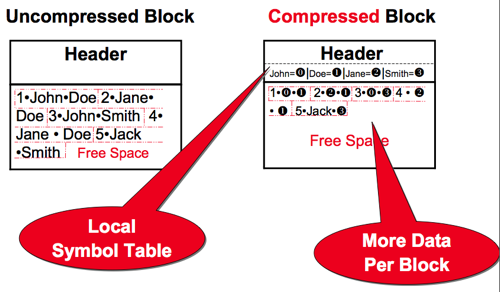I’m very pleased to let you know that Oracle Advanced Compression is supported for use with Oracle E-Business Suite Release 11i and 12. Advanced Compression is one of the
new Oracle Database 11gR1 Enterprise Edition options that seems to generate the most interest amongst E-Business Suite customers. After all, your production E-Business Suite database doesn’t exist in isolation.
You’ve got copies in testbed sandboxes, internal development environments, User Acceptance Testing (UAT) environments, and staging environments, too. Reducing your EBS database size by even a small amount can result in big savings when added up across
all of your non-production E-Business Suite instances.

As an aside, I can’t resist telling you about the most extreme case of this that I’ve encountered. An Apps DBA for a Canadian federal agency once told me that they have over fifty intermediary instances standing between their Development and
Production stages. The mind boggles.
Works Transparently with the E-Business Suite
Advanced Compression is completely transparent to the E-Business Suite. In other words, you can follow the generic Oracle Advanced Compression documentation to enable this feature for E-Business Suite databases:
As far as E-Business Suite databases are concerned :
Advanced Compression works with transparently with both Oracle E-Business Suite Release 11i and 12.
No additional database or E-Business Suite patches are required.
No special configuration options are required.
Considerations for EBS Environments
Given the wholly transparent nature of this database option, we haven’t published any special whitepapers or Metalink Notes for E-Business Suite environments. Aside from the obvious aspect of reducing your E-Business Suite database’s size, here are
some things that you can expect when enabling this option:
Enabling compression doesn’t compress existing data. You must do a table level reorg to free up space. In practice, you’re more likely to do this at the partition level, especially with time-based partitioning.
The time required to do any reorganizations will depend upon the amount of real data that you have. Your mileage will vary (and we’d like to hear about it — see below).
In general, EBS performance is expected to improve, since the queries will benefit from improved I/O and memory efficiency.
That said, your users’ transactional mix, the amount of historical production data, and your database server and storage configurations will all affect overall performance. Our Applications Performance Group plans to do detailed performance
benchmarking with this option and Apps reference data. Those benchmarks haven’t been scheduled yet, but I’ll post those benchmarks here as soon as they’re published.
What Have You Found?
We’re eager to hear about your experiences with Advanced Compression in your E-Business Suite environments. If you have anecdotal remarks about how well it’s worked for you, please drop me a line or post a comment here. Any statistics about the
amount of compression you’ve achieved or performance benchmarks would be even more welcome.
Related Articles
